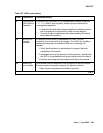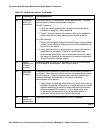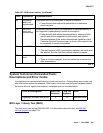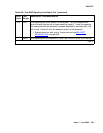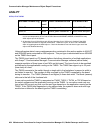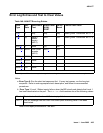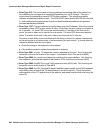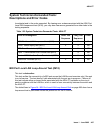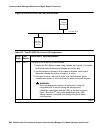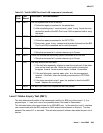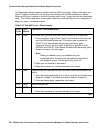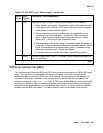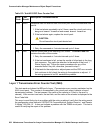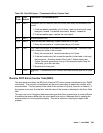
Communication Manager Maintenance-Object Repair Procedures
496 Maintenance Procedures for Avaya Communication Manager 3.0, Media Gateways and Servers
c. Error Type 513: The circuit pack is having problems transmitting data to the packet bus,
thus affecting the conveyance of signaling information over the D channel. This error
occurs when the packet bus transmit FIFO buffer overflows. This condition probably
indicates a hardware problem as well. The ASAI-PORT alarm level is MAJOR with aux data
0. Use troubleshooting procedures for both on-board hardware problems and potential
off-board packet-bus problems.
d. Error Type 1537: The port received an invalid frame over the D channel. When the cyclical
redundancy check (CRC) errors exceed 5 within 15 minutes, the port is taken out of service
for 5 seconds. If 5 more CRC errors are received within 15 minutes of the first set of 5
errors, the port is taken out of service for one minute. If 5 more CRC errors are received
within 15 minutes of the last 5, the port is taken out of service for 15 minutes.
This error is most likely due to a problem with the wiring to the set or adjunct, interference
on the wiring due to a noise source, or no termination (an open circuit). It usually does not
indicate a problem with the circuit pack.
● Check the wiring to the endpoints or the adjunct.
● If the problem persists, replace the endpoints or adjuncts.
e. Error Type 3841: a Layer 1 Transmission error is detected for the port. Run the long test
sequence, and note the results of the Layer 1 Transmission Error Counter test (#624).
f. Error Type 3844: the circuit pack detects an overflow of its receive buffers. Run the long
test sequence, and note the results of the Receive FIFO Overflow Counter test (#625).
g. Error Type 3845: the BRI Port Local LAN Looparound test (#618) fails. Run the long test
sequence, and note the results of Test #618.
h. Error Type 3846: the TEI (Terminal Endpoint Identifier) administered for the ASAI endpoint
most likely does not match the TEI administered in the ASAI adjunct. Check the switch
administration of the TEI against that of the adjunct, and make sure that both are using the
same TEI.




